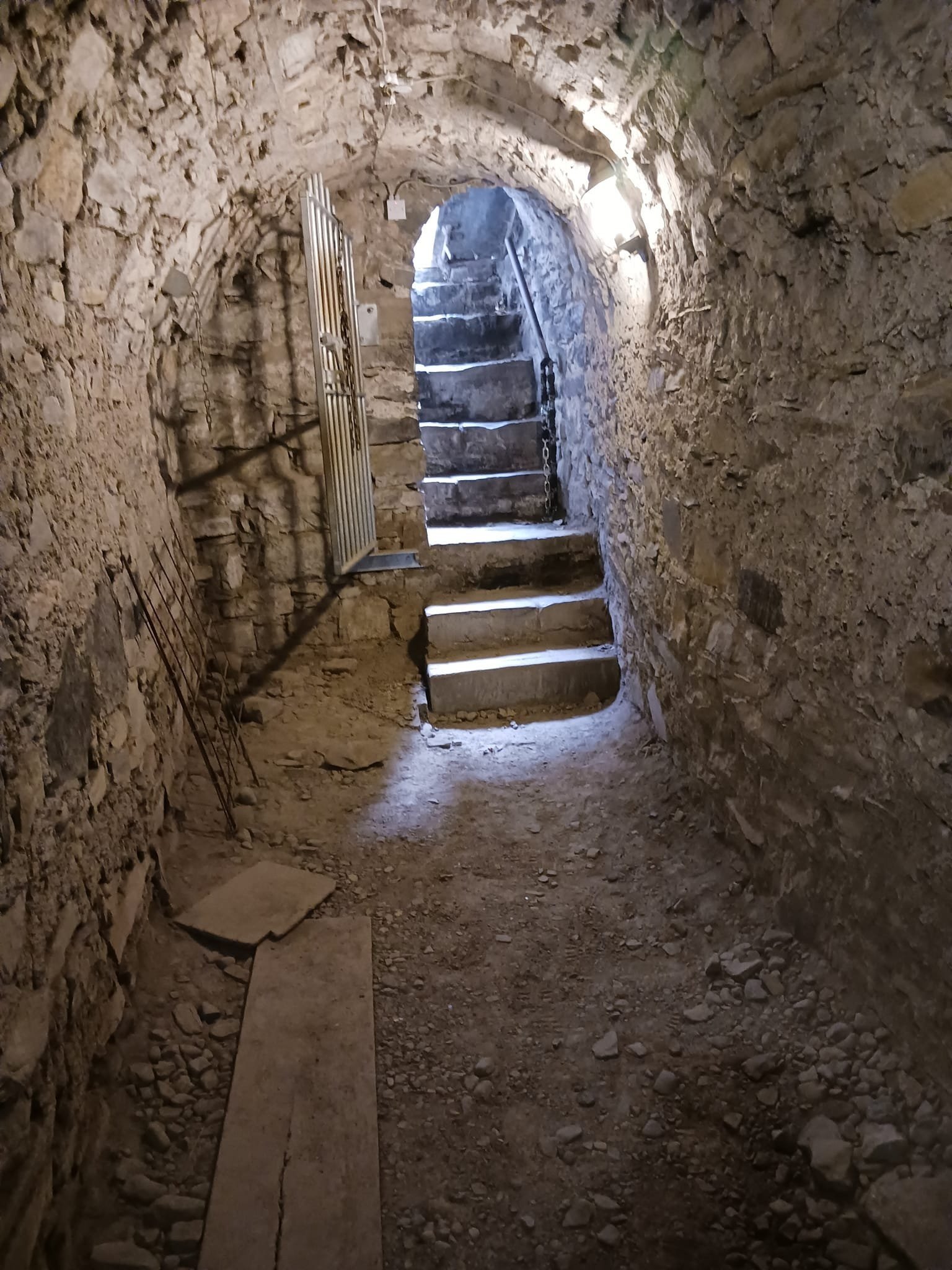St. Michan’s Church
Dublin, Ireland
The spire of St. Michan’s church in Dublin peeks surreptitiously at you from in between the other buildings, as you approach, it watches expectantly for several blocks as you make your way through a drizzly Dublin afternoon to visit the Anglican church, originally built in 1095 to serve the remaining vikings in Dublin.
You walk through wrought iron gates into a black-top parking lot. A large wooden door with iron braces and no outside handle bears a handwritten sign informing you that the next tour will begin in approximately 15 minutes. In the meantime, you explore a quaint graveyard with markers so old the dates and names have been eroded past legibility. Several graves contain no markers, but are large tabletops resting atop a pile of smaller stones. You don’t know the meaning of these, but they seem ancient and barbarian.
After exploring the graveyard, you are led through a cellar door, a hole in the ground, where you crouch to avoid hitting your head while stepping down crumbling stone steps, simultaneously attempting to avoid both banging your head and tripping on the stairs.
Down through the cellar door…
An iron door with a chain woven through its bars is unlocked and creaks open to let you through. You are led into a dusty, stone, medieval hallway.
Three of “The Big Four.”
You peer through rough portholes in the stone walls into a room filled with four-well preserved mummies lying in open wooden coffins. Black leather skin stretches over sharp cheekbones. Wide open mouths appear frozen in a scream. Broken coffins lay strewn about the floor, leathery hands reach out through splintered wood as if trying to break free. A layer of limestone dust blankets the silent tableau.
Theories as to why the mummies in this ancient viking church remain so well-preserved abound, the limestone from which the church cellar is constructed makes the air in the basement exceedingly dry. The church itself is built on former swampland, which contains methane gas, which might have preserved the cadavers. Perhaps oakwood in the soil or building materials of the church mummified the faithful.
Ordinarily it would be deemed inappropriate for a church to display human remains, but since the coffins broke and the bodies tumbled out on their own, it is acceptable to bring generations of Dublin’s most ghoulish visitors and residents.
The “big four” mummies are all located in one room. There first is a woman dubbed “The Unknown.” Not much is mentioned of her in the way of distinguishing features in either the tour or the literature.
The Thief is missing a hand, which was possibly cut off as punishment for theft, a common practice at the time. It is believed that, if he had been a thief, he must have repented and become either a priest or some other respected community figure, as it was considered a great honor to be buried beneath a church. It is, of course, also possible that The Thief was never a thief at all and that he lost his hand in some other way.
Beside The Thief is a small woman believed to be a nun, because she was honored by being buried beneath the church.
The Crusader is an 800 year old mummy, who was 6’6, which while tall now, would have been considered giant back then. The Crusaders legs were broken and folded behind him so that he could fit in the coffin. While there is no evidence that he was actually a crusader, his broken legs were crossed at the feet as an homage to Jesus. One of The Crusaders arm stretches slightly upwards toward the viewers, who in days past were encouraged to touch his reaching hand for luck.
Some of the most elaborate coffins belong to the earls of Leitrim, who were buried under St. Michan’s for generations. The third earl was so universally despised by his own family, that he is buried in a plain casket. Some members of his family even gave up their spots, so as not to be stuck next to him for eternity.
Death mask of Wolfe Tone and caskets of the Sheares Brothers.
In what appears to be a room reserved for revolutionaries, is displayed the death mask of Wolfe Tone. A death mask is cast in wax from the face of a corpse. Wolfe Tone, was considered by many to be the founder of Irish Republicanism. He attempted to unite the Catholics and Protestants and enlist French aid. Wolfe Tone was captured by the British navy in 1798 while attempting to land in Ireland with French troops and supplies. Wolfe Tone was sentenced to hang, but died before his scheduled execution. He was treated by a doctor for an “unusual wound on his throat.” It is believed that he either attempted to slit his own throat, or was killed by British soldiers.
Speaking of torture, the bodies of the Sheares brothers occupy the same room with Wolfe Tone’s death mask. The Sheares brothers were executed by the British during the uprisings in 1798, they were drawn and quartered- hanged almost to the point of death, at which point, they were taken down, their genitals were cut off, they were disemboweled, and finally their bodies were cut into quarters while they were still alive.
In February 2019 the crypt was broken into and desecrated, the head of The Crusader was stolen, The Nun’s body was decapitated, and another body was turned over. The bones were eventually recovered and returned for future visitors to behold. Generations of the most ghoulish visitors, including Dracula author Bram Stoker, have visited the vaults of St. Michan’s. Many have reported hearing hissed whispers, the prickling feeling of being watched, and occasionally even being touched by an unknown hand.







